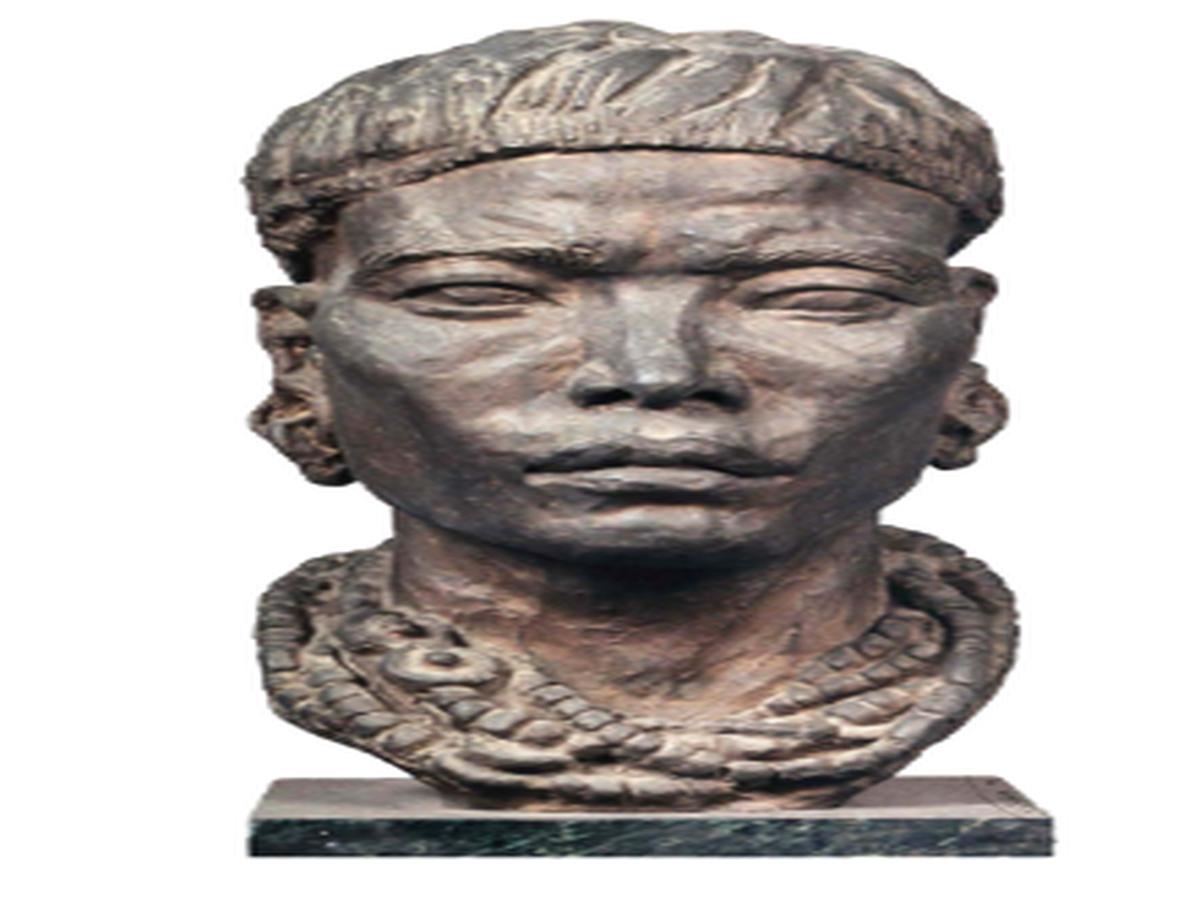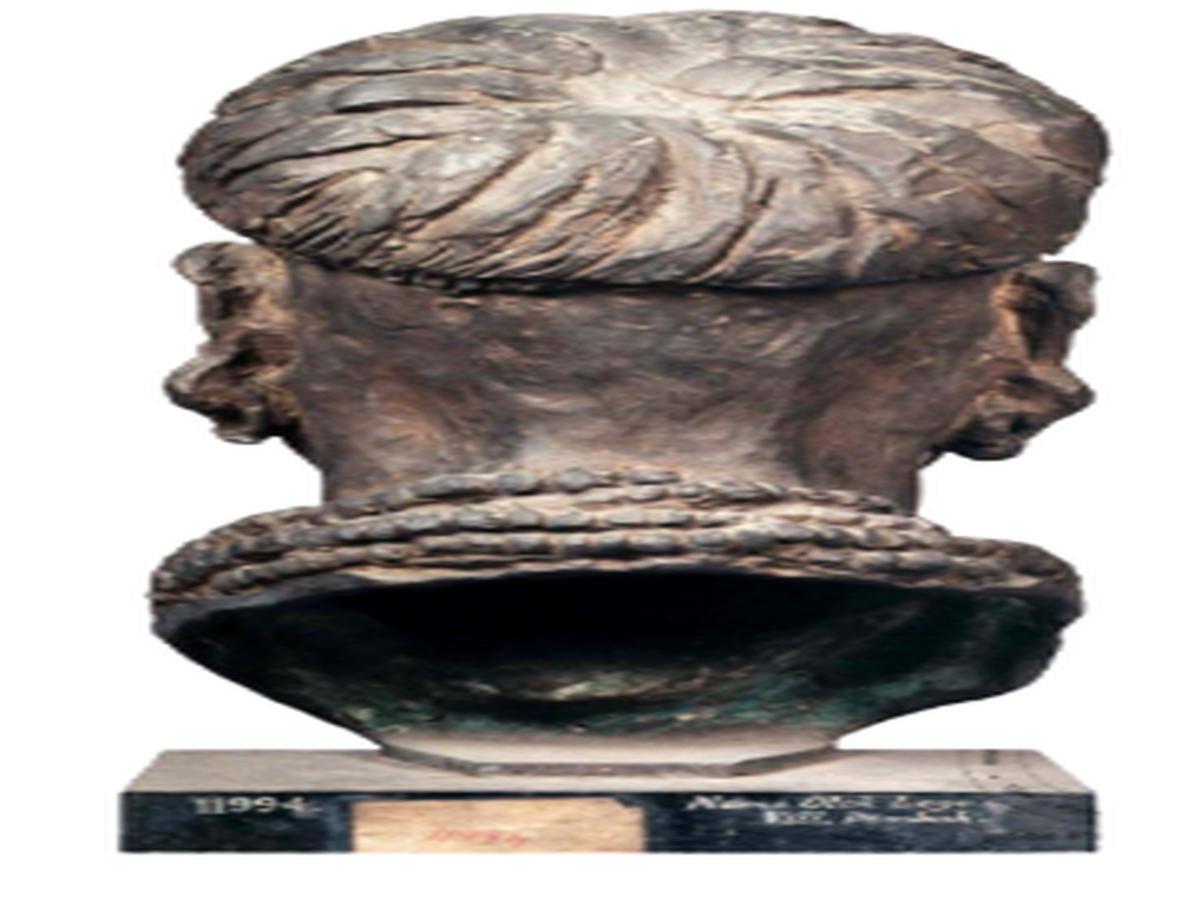State
Tribe Name
Art Type
short description
The bronze statue represents an Abor male. Abor stands for a male member of the warrior-like Abor tribe which the Adis now call themselves in Arunachal Pradesh, India. The bust is exquisitely made with the characteristic Mongoloid features, more especially that epicanthic fold of the eyes, like all the tribes in Northeast India. It rests upon a square stone (granite) base rendering it ground in cultural dignity and symbolic permanence. Accoutred is official headgear, as indicative of status and masculine identity in Abor society. The neck and shoulders of the bust are decked in ear ornaments and several bead necklaces, symbolic of the love of this tribe for ornamentation that carries an aesthetic as well as a significant dimension. Beads and ornaments are inherited for generations and usually are good symbols for the age, esteem, and achievements in life or battle.
Thumbnail

Filter Postion
Left
Filter Background
Off
Theme
Filter Header Image

content
Image

description
The bronze statue represents an Abor male. Abor stands for a male member of the warrior-like Abor tribe which the Adis now call themselves in Arunachal Pradesh, India. The bust is exquisitely made with the characteristic Mongoloid features, more especially that epicanthic fold of the eyes, like all the tribes in Northeast India. It rests upon a square stone (granite) base rendering it ground in cultural dignity and symbolic permanence. Accoutred is official headgear, as indicative of status and masculine identity in Abor society. The neck and shoulders of the bust are decked in ear ornaments and several bead necklaces, symbolic of the love of this tribe for ornamentation that carries an aesthetic as well as a significant dimension. Beads and ornaments are inherited for generations and usually are good symbols for the age, esteem, and achievements in life or battle.
Image Mode
landscape
Image

description
With its oral literature, the Abor (Adi) pride itself on the great resistance which it showed to colonial invasions of its territory, as well as the exceptional relationship that it has with nature. Within this rich oral tradition, much artistic creations are usually intertwined with themes of bravery and spirituality with the memory and veneration of one's ancestors. Such sculptural representations, like this effigy, are usually very rare and highly valuable, because they keep the cultural memory and offer insight into the visual language and attire of the tribe. Such busts are not only decorative but very well symbols of the tribal heritage, masculinity, and ethnic pride; therefore, an extremely important cultural artifact in the study of indigenous northeastern Indian communities.
Image Mode
landscape
promoted
On
Verified
Off
